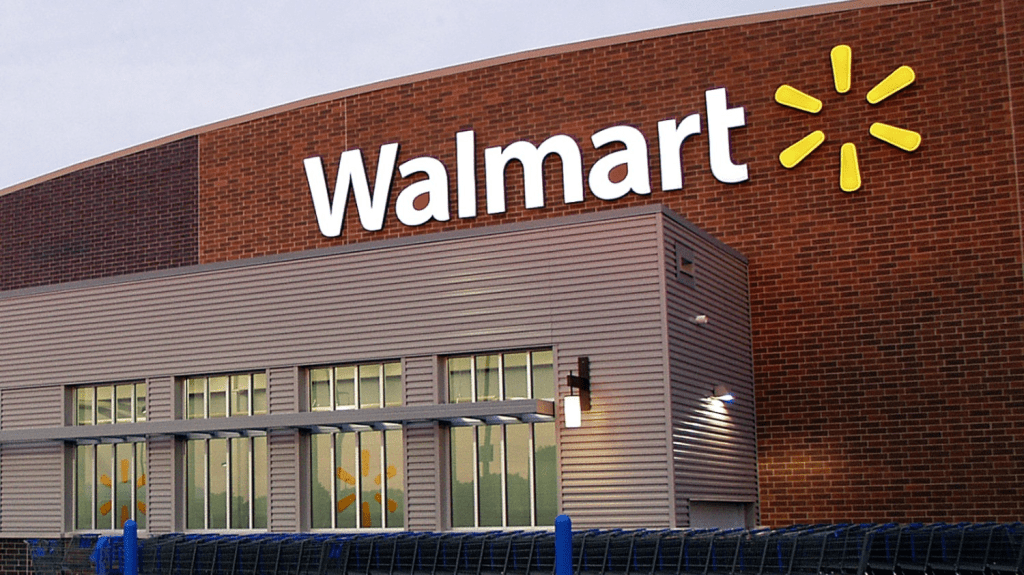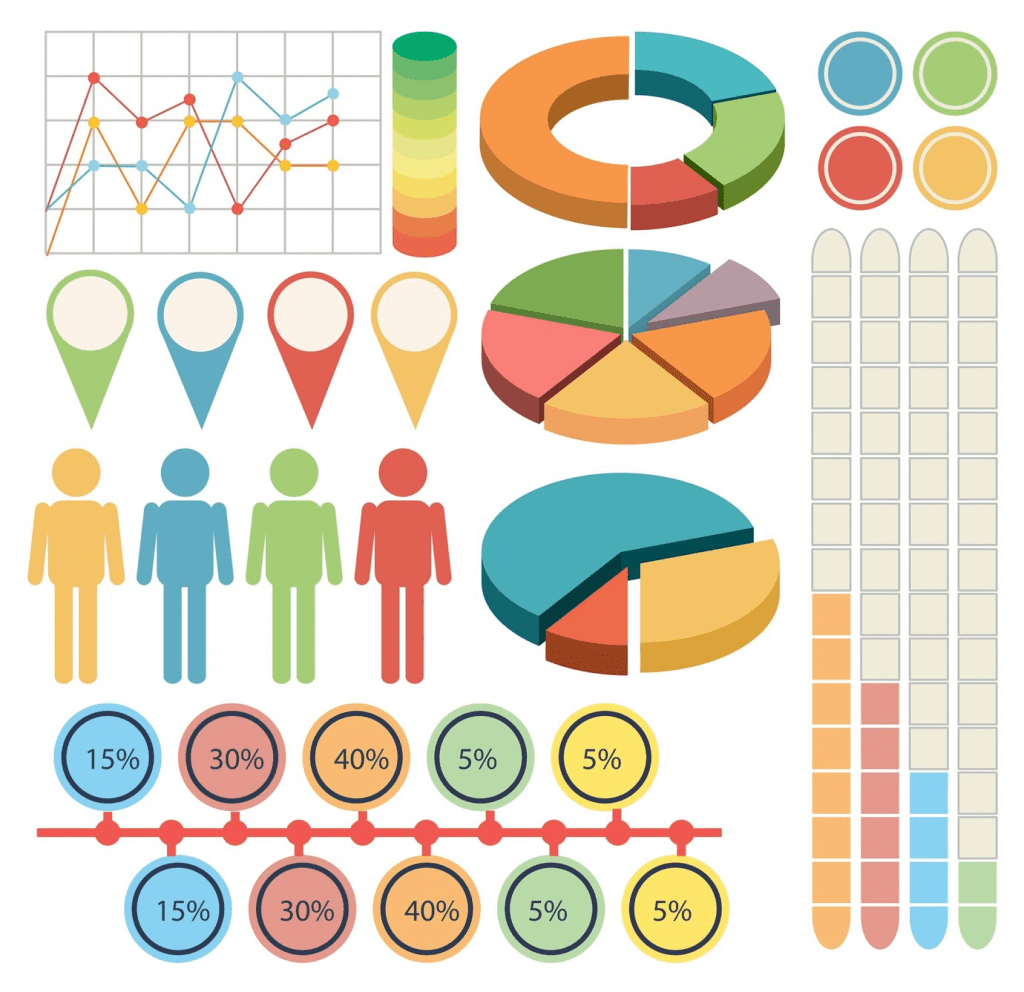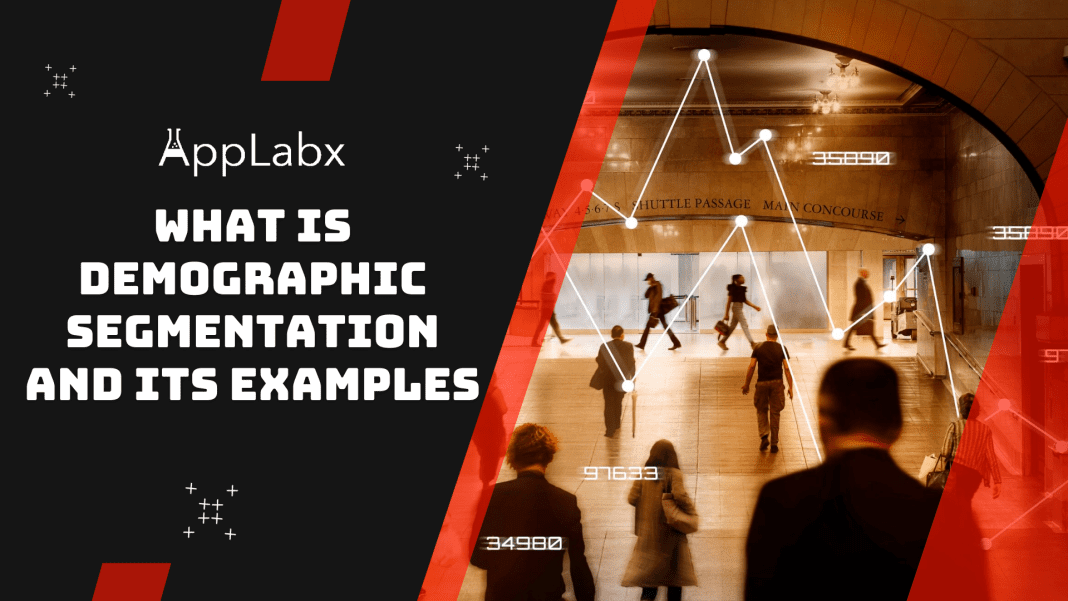Key Takeaways
- Precision Unleashed: Demographic segmentation is the compass for precision marketing, allowing businesses to tailor messages, products, and strategies with surgical precision.
- Strategic Adaptation: Navigate the marketing landscape by understanding key concepts, leveraging advanced tools, and anticipating future trends in demographic segmentation.
- Real-world Impact: Learn from successful examples of how demographic segmentation transforms campaigns, engages diverse audiences, and propels businesses toward sustainable growth.
In the dynamic realm of marketing, the quest for relevance and resonance with target audiences has evolved into a strategic science.
At the forefront of this transformative approach lies “Demographic Segmentation.”
It’s not just a marketing buzzword; it’s a powerful methodology that allows businesses to tailor their strategies with surgical precision, ensuring their messages resonate with the right audience at the right time.
This comprehensive guide serves as your passport to the world of demographic segmentation, unravelling its intricacies, significance, and real-world applications.
Whether you’re a seasoned marketer seeking to refine your targeting strategies or a business owner aiming to enhance your market outreach, this journey through the landscape of demographic segmentation promises valuable insights and actionable takeaways.

Decoding the Essence of Demographic Segmentation
At its core, demographic segmentation involves categorizing a target market into distinct segments based on tangible and quantifiable traits.
These traits span a spectrum of factors, including age, gender, income, education, and location.
As businesses embrace this nuanced approach, they unlock the ability to understand, connect with, and influence their audience on a deeply personal level.
Significance of Demographic Segmentation in Precision Marketing
In an era inundated with information and choices, generic, one-size-fits-all marketing strategies fall short.
Demographic segmentation emerges as the antidote, allowing businesses to navigate the diverse preferences, behaviours, and aspirations of their audience groups.
By understanding the unique characteristics of each segment, marketers can tailor their messages, products, and services with unparalleled relevance.
Navigating the Blog Landscape
As we embark on this enlightening journey, each section serves as a stepping stone, unravelling the layers of demographic segmentation.
By the end of this comprehensive guide, you will not only comprehend the intricacies of demographic segmentation but also be equipped with actionable strategies and insights to integrate into your marketing endeavours.
Let’s embark on this enlightening exploration of precision marketing through demographic segmentation.
But, before we venture further, we like to share who we are and what we do.
About AppLabx
From developing a solid marketing plan to creating compelling content, optimizing for search engines, leveraging social media, and utilizing paid advertising, AppLabx offers a comprehensive suite of digital marketing services designed to drive growth and profitability for your business.
AppLabx is well known for helping companies and startups use digital marketing to drive web traffic to their websites and web apps.
At AppLabx, we understand that no two businesses are alike. That’s why we take a personalized approach to every project, working closely with our clients to understand their unique needs and goals, and developing customized strategies to help them achieve success.
If you need a digital consultation, then send in an inquiry here.
What Is Demographic Segmentation And Its Examples?
- Key Concepts of Demographic Segmentation
- Benefits of Demographic Segmentation
- Challenges and Considerations
- Tools and Technologies for Demographic Segmentation
- Future Trends in Demographic Segmentation
1. Key Concepts of Demographic Segmentation
In the intricate dance of marketing, the key to success lies in understanding the diverse facets that make up your target audience.
Demographic segmentation, as a strategic compass, relies on several core concepts to navigate the nuanced landscape of consumer behaviour.

Let’s unravel the essence of these key concepts:
Age: Deciphering Generational Nuances
- Significance in Targeting Consumer Groups: Age segmentation is a cornerstone of demographic analysis, offering profound insights into consumer behaviour.
According to a report by Statista, as of 2022, millennials and Generation Z together represent over 40% of the US population, making them influential market segments. - Examples of Age-Based Demographic Segmentation:
- Brands Leveraging Generational Preferences: Nike’s marketing strategies effectively target different age groups. For instance, their campaigns resonate with younger audiences by incorporating social justice themes, while their classic designs appeal to older demographics.
- Technology Adoption Across Generations: The adoption of technology varies across age groups.
According to a 2022 survey of internet users in the United States, 91 per cent of users between 30 and 49 years regularly use a smartphone to go online. Young adults between 18 and 29 years ranked second with 87 percent.
Gender: Crafting Inclusive Marketing Narratives
- Role in Crafting Marketing Strategies: Gender-based segmentation transcends traditional stereotypes, allowing businesses to create inclusive campaigns.
Women make up more than half of the U.S. population, and control or influence 85% of consumer spending. - Illustrative Examples of Gender-Based Segmentation:
- Dove’s “Real Beauty” Campaign: Dove’s inclusive approach to beauty has resonated globally. Their “Real Beauty” campaign challenges conventional beauty standards, garnering support from diverse gender identities.
- Gillette’s “The Best Men Can Be”: Gillette’s ad campaign addressed toxic masculinity, reflecting a shift in gender-focused marketing strategies to align with societal changes.
Income: Understanding Purchasing Power Dynamics
- Understanding Purchasing Power: Income segmentation is crucial for tailoring products and services to align with the financial capacity of different consumer groups.
- Instances of Income-Based Demographic Segmentation:
- Luxury Brands and High-Income Demographics: Luxury brands like Louis Vuitton strategically target high-income consumers, emphasizing exclusivity and quality to match their purchasing power.
- Affordable Alternatives for Lower-Income Segments: Brands like Walmart employ pricing strategies and promotions to cater to lower-income demographics, aligning with their budget constraints.

Education: Impact on Consumer Preferences
- Impact on Consumer Preferences: Education-based segmentation provides insights into consumer preferences shaped by knowledge and awareness.
- Case Studies Demonstrating Education-Based Segmentation:
- Whole Foods Market: Whole Foods strategically appeals to more educated consumers by emphasizing organic and sustainable products. This aligns with the educated demographic’s preference for environmentally conscious choices.

- Consumer Electronics Preferences: Educational backgrounds influence preferences in consumer electronics. College-educated individuals might prioritize cutting-edge technology, influencing marketing strategies for products like smartphones and laptops.
Location: Geographic Targeting for Enhanced Relevance
- Geographic Targeting for Enhanced Relevance: The geographical context is a potent factor in consumer behaviour. Localizing marketing efforts can significantly enhance relevance and engagement.
According to Google, 30% of mobile searches are related to location, emphasizing the importance of geographic targeting. - Noteworthy Examples of Location-Based Segmentation:
- McDonald’s Regional Menu Offerings: McDonald’s tailors its menu based on regional preferences, offering items that resonate with local tastes. This approach exemplifies the power of location-based customization.
- Localized Digital Campaigns: Google Ads allows businesses to target specific geographic regions, ensuring that digital advertising reaches the most relevant local audiences. This precision is especially crucial for small businesses aiming to connect with nearby consumers.

2. Benefits of Demographic Segmentation
In the ever-evolving landscape of marketing, the adoption of demographic segmentation isn’t merely a strategic choice; it’s a transformative leap toward precision and relevance.
This section unravels the myriad benefits that businesses stand to gain by embracing demographic segmentation as a cornerstone of their marketing endeavours.

Improved Marketing Precision: Tailoring Messages to Target Audiences
- Customized Campaigns for Targeted Impact: Demographic segmentation allows businesses to craft campaigns that resonate specifically with the preferences and behaviours of distinct consumer groups.
- Example: Coca-Cola’s Personalized Share a Coke Campaign: Coca-Cola’s “Share a Coke” campaign exemplifies the power of personalized marketing.
By printing individual names on their bottles, Coca-Cola effectively engaged consumers on a personal level, boosting sales and brand affinity.
Increased Customer Engagement: Fostering Connection and Loyalty
- Building Emotional Connections: Demographic segmentation enables brands to create emotionally resonant campaigns, fostering a deeper connection with their audience.
A report found that emotionally engaged customers are three times more likely to recommend a product or service. - Example: Airbnb’s Inclusive Marketing Approach: Airbnb’s “We Accept” campaign focused on inclusivity, celebrating diversity, and reinforcing a sense of belonging.
By aligning with the values of its diverse user base, Airbnb not only increased engagement but also strengthened brand loyalty.
Higher ROI through Targeted Campaigns: Maximizing Marketing Efficiency
- Cost-Effective Advertising Strategies: Demographic segmentation allows businesses to allocate their marketing budget more efficiently by focusing on channels and messages that resonate with specific target audiences.
- Example: Amazon’s Algorithm-Driven Recommendations: Amazon’s recommendation engine is a testament to the power of targeted marketing.
By analyzing demographic and behavioural data, Amazon suggests products tailored to individual preferences, contributing significantly to their impressive conversion rates.
Enhanced Product Development: Aligning Offerings with Consumer Needs
- Tailoring Products to Consumer Preferences: Demographic insights guide product development, ensuring that offerings align with the specific needs and desires of diverse consumer segments.
A study revealed that data-driven organizations are 23 times more likely to acquire customers. - Example: Procter & Gamble’s Innovation Based on Demographics: Procter & Gamble utilizes demographic data to innovate products like skincare lines tailored to specific age groups.
This approach not only boosts customer satisfaction but also drives innovation in response to changing consumer needs.
Efficient Resource Allocation: Maximizing Marketing Impact
- Optimizing Resources for Maximum Impact: By understanding the demographics of their audience, businesses can allocate resources effectively, concentrating efforts on the most lucrative market segments.
- Example: Facebook Ad Targeting for Local Businesses: Local businesses on Facebook leverage demographic data to target ads geographically, ensuring that their marketing efforts reach the most relevant local audiences.
This targeted approach often leads to higher conversion rates and a more significant return on investment.

3. Challenges and Considerations
As businesses delve into the strategic realm of demographic segmentation, it’s imperative to acknowledge the challenges and considerations that accompany this powerful marketing approach.
This section explores the nuanced landscape, shedding light on potential pitfalls and ethical considerations.

Ethical Considerations in Demographic Segmentation: Balancing Personalization and Privacy
- Balancing Personalization and Privacy: The quest for personalization must navigate the ethical landscape of consumer privacy.
A survey by the Pew Research Center found that 79% of adults assert they are very or somewhat concerned about how companies are using the data they collect about them, emphasizing the need for transparent and ethical data practices. - Example: Facebook’s Data Privacy Controversies: Facebook’s involvement in data privacy scandals, such as the Cambridge Analytica incident, highlights the ethical challenges associated with collecting and utilizing user data for targeted advertising.
Striking the right balance between personalization and privacy is crucial for maintaining consumer trust.
Potential Pitfalls and How to Mitigate Them: Strategic Maneuvers for Success
- Overreliance on Stereotypes: Demographic segments should be seen as dynamic groups, not rigid stereotypes. Overreliance on assumptions can lead to misinterpretations and alienation.
Brands like Pepsi faced backlash for a commercial that oversimplified generational stereotypes, highlighting the importance of nuanced understanding. - Mitigation Strategy: Continuous Data Analysis and Feedback:
Regularly updating demographic data and actively seeking feedback from consumers helps businesses adapt their segmentation strategies to evolving trends, minimizing the risk of relying on outdated or inaccurate assumptions. - Inadequate Data Security: With the increasing frequency of data breaches, ensuring the security of consumer information is paramount.
According to the Identity Theft Resource Center, in 2021, the overall number of data compromises (1,862) is up more than 68 per cent compared to 2020, underscoring the need for robust data protection measures. - Mitigation Strategy: Implementing Stringent Data Protection Protocols: Businesses must invest in state-of-the-art cybersecurity measures to safeguard consumer data. Transparent communication about data protection practices also builds trust with consumers.

Adapting to Dynamic Consumer Behaviors: Staying Ahead of Shifting Trends
- Rapid Changes in Consumer Behavior: Consumer behaviours are dynamic and influenced by various factors. The COVID-19 pandemic, for instance, drastically altered purchasing patterns.
- Mitigation Strategy: Agile Marketing Strategies and Continuous Monitoring: Businesses should adopt agile marketing strategies that allow for quick adaptation to changing consumer behaviours.
Regularly monitoring market trends and staying abreast of technological advancements ensures timely adjustments to segmentation strategies. - Cultural Sensitivity and Diversity: In an increasingly globalized world, demographic segmentation must account for cultural nuances and diversity. Failure to do so can lead to alienation and backlash.
The #BoycottDelta campaign, sparked by a perceived lack of cultural sensitivity in a Delta Air Lines ad, serves as a cautionary example. - Mitigation Strategy: Cultural Competence Training and Diversity Inclusion: Businesses should invest in cultural competence training for marketing teams, ensuring campaigns are respectful and inclusive.
Diverse representation within teams can provide valuable insights to avoid unintentional missteps.

4. Tools and Technologies for Demographic Segmentation
In the digital age, the effectiveness of demographic segmentation is significantly amplified by advanced tools and technologies.
This section delves into the cutting-edge solutions that empower businesses to dissect and understand their audience with unprecedented precision.

Overview of Analytics Tools: Unveiling Consumer Insights
- Google Analytics: Unleashing Comprehensive Data Analysis: Google Analytics stands as a powerhouse for businesses, providing an array of demographic data insights.
It enables the examination of the age, gender, interests, and geographic location of website visitors. Google Analytics is used by 89.3% of the top 1,000,000 websites with traffic analysis tools as of July 27, 2023. - Adobe Analytics: Harnessing Cross-Channel Data Integration: Adobe Analytics offers a comprehensive approach, integrating data from various channels for a holistic view. Its capabilities extend to demographics, aiding businesses in crafting targeted strategies.
Adobe Analytics was recognized as a Leader in the Gartner Magic Quadrant for Personalization Engines for the fourth consecutive year.

CRM Systems for Effective Segmentation: Centralizing Customer Data
- Salesforce: Streamlining Customer Relationship Management: Salesforce, a pioneer in CRM, facilitates the organization and segmentation of customer data. Its capabilities allow businesses to target specific demographics effectively.
- HubSpot: Inbound Marketing with CRM Integration: HubSpot’s CRM system seamlessly integrates with its marketing platform, offering tools for detailed customer segmentation. The platform enables businesses to tailor marketing efforts based on demographics.
As of August 2023, the data shows HubSpot’s continued market leadership with a commanding 37.32% share.
Also, read our top guide on the Top 7 Best Content Management Systems (CMS) To Use to get started on using a CRM.
Social Media Analytics: Tapping into User Demographics
- Facebook Insights: Leveraging Social Media Demographics: Facebook’s Insights provides valuable demographic data about page followers and engagement. Businesses can understand the age, gender, and location of their audience.
With roughly three billion monthly active users as of the second quarter of 2023, Facebook is the most used online social network worldwide. - X (formerly Twitter) Analytics: Uncovering Audience Characteristics: X (formerly Twitter) Analytics equips businesses with insights into their audience’s interests and demographics. The platform allows segmentation based on location, gender, and interests.

Customer Surveys and Feedback Tools: Direct Insights from the Source
- SurveyMonkey: Crafting Targeted Surveys for Insights: SurveyMonkey empowers businesses to create targeted surveys, collecting demographic information directly from respondents. As of 2021, SurveyMonkey served over 345,000 organizations globally.
- Qualtrics: Comprehensive Experience Management: Qualtrics provides a platform for experience management, including customer feedback. It allows businesses to gather insights on customer demographics and preferences.
AI and Machine Learning: Predictive Segmentation
- IBM Watson Customer Experience Analytics: Harnessing AI Insights: IBM Watson Customer Experience Analytics employs AI to analyze customer behavior, providing insights for segmentation.
- Predictive Analytics with Salesforce Einstein: Anticipating Customer Behavior: Salesforce Einstein leverages AI for predictive analytics, aiding businesses in anticipating customer behavior.
Geo-Targeting Tools: Precision in Geographic Segmentation
- Google Ads Location Targeting: Pinpointing Ad Visibility: Google Ads enables businesses to target specific geographic locations, ensuring advertisements reach the most relevant audience.
- GeoFencing with Gimbal: Real-Time Location-Based Targeting: Gimbal’s GeoFencing technology allows businesses to create virtual boundaries for targeted marketing based on real-time location data.

5. Future Trends in Demographic Segmentation
As businesses continue to harness the power of demographic segmentation, staying abreast of emerging trends is essential.
This section delves into the future of demographic segmentation, exploring technological advancements and evolving consumer behaviors that will shape the marketing landscape.

Evolving Technologies Shaping the Landscape:
- Artificial Intelligence (AI) and Machine Learning (ML):
- Predictive Segmentation: AI and ML algorithms are becoming increasingly adept at predicting consumer behavior. Future segmentation strategies will likely leverage predictive analytics to anticipate the evolving needs and preferences of consumers.
- Chatbots for Personalized Interactions: Advanced chatbots powered by AI will play a pivotal role in personalized customer interactions. By analyzing user input and behavior, chatbots can provide tailored recommendations and assistance.
- Augmented Reality (AR) and Virtual Reality (VR):
- Immersive Shopping Experiences: AR and VR technologies will revolutionize the online shopping experience. Consumers can virtually try products before purchase, and businesses can tailor these experiences based on demographic preferences.
- Interactive Advertising: AR-enhanced advertisements will offer interactive experiences, engaging users based on their demographics. This dynamic approach will likely become a staple in future marketing campaigns.
Anticipated Changes in Consumer Behavior:
- Rise of Conscious Consumerism:
- Preference for Sustainable Brands: As environmental awareness grows, consumers are expected to favor brands that align with sustainable practices. Future demographic segmentation will likely involve identifying and targeting eco-conscious consumer groups.
- Impact on Industries: The fashion industry, for instance, is witnessing a shift towards sustainable fashion. Brands like Patagonia, known for their commitment to environmental responsibility, attract consumers who prioritize eco-friendly choices.
- Digital Natives and Immersive Experiences:
- Rise of Generation Alpha: The emergence of Generation Alpha (born after 2010) will reshape consumer dynamics. This generation, growing up with technology, will demand immersive and interactive brand experiences.
- Preference for Virtual Events: Virtual events and experiences will become integral to reaching younger demographics. Brands that can create engaging digital experiences will have a competitive advantage.
- Privacy Concerns and Personalized Marketing:
- Balancing Personalization and Privacy: Heightened awareness of data privacy will influence consumer attitudes toward personalized marketing. Businesses will need to navigate the delicate balance between customization and respecting user privacy.
- Shift in Marketing Strategies: Brands may need to adopt explicit opt-in approaches for personalized marketing, ensuring transparent communication about data usage.
- Mobile-First and Voice-Activated Interactions:
- The Dominance of Mobile Devices: The continued dominance of mobile devices will shape demographic segmentation strategies. Businesses must optimize their online presence for mobile platforms to effectively reach their target audiences.
- Voice Search Optimization: With the rise of voice-activated devices, businesses will need to adapt their digital content for voice search. This includes understanding the language nuances of different demographic segments.

Conclusion
As we draw the curtains on our deep dive into the realm of demographic segmentation, it becomes abundantly clear that this strategic approach is not just a tool; it’s the compass guiding businesses toward precision, relevance, and lasting connections with their audience.
The journey through key concepts, benefits, challenges, tools, and future trends has illuminated the transformative power of demographic segmentation in the marketing landscape.
The Power of Understanding: Key Concepts Explored
In dissecting the key concepts of demographic segmentation – from age and gender to income, education, and location – we uncovered the pivotal role these factors play in unraveling the complex tapestry of consumer behavior.
Each demographic trait emerged as a unique lens through which businesses can comprehend, anticipate, and respond to the diverse needs and preferences of their audience.
Unlocking Transformative Benefits: A Strategic Imperative
The benefits of demographic segmentation echo beyond mere marketing tactics; they resonate as strategic imperatives for any business aiming to thrive in the competitive arena.
From improved precision and heightened engagement to cost-effective campaigns and product innovation, the advantages are as diverse as the segments themselves.
Navigating Challenges with Foresight and Ethical Integrity
However, as with any strategic tool, demographic segmentation is not without its challenges. The ethically charged landscape of privacy concerns, potential pitfalls, and the need for continuous adaptation demands vigilance.
By acknowledging these challenges and implementing mitigation strategies, businesses can navigate the demographic segmentation terrain with foresight and ethical integrity, ensuring sustainable success.
The Toolbox of Precision: Harnessing Advanced Technologies
Our exploration into the toolbox of demographic segmentation revealed a plethora of advanced technologies – from analytics tools and CRM systems to social media analytics, AI, and geo-targeting solutions.
These technological marvels empower businesses to not only understand their audience but to predict, engage, and adapt in real-time, amplifying the effectiveness of demographic segmentation.
Charting the Course of Tomorrow: Future Trends Unveiled
The future of demographic segmentation holds promises of even greater precision and relevance. As AI, AR, VR, and changing consumer behaviors shape the marketing horizon, businesses must be agile, adaptable, and ethically conscious.
The rise of Generation Alpha, the dominance of conscious consumerism, and the integration of mobile-first and voice-activated interactions are trends that demand attention and strategic alignment.
In concluding this comprehensive guide, businesses are urged not merely to see demographic segmentation as a strategy but as a dynamic force that propels them forward in the ever-evolving marketing landscape.
To master demographic segmentation is to decode the language of your audience, anticipate their needs before they arise, and craft campaigns that resonate on a personal level.
So, as you venture forth armed with the insights garnered from this guide, remember that demographic segmentation is not a one-time implementation but an ongoing journey of adaptation and innovation.
Embrace the tools, navigate the challenges, and stay attuned to the pulse of evolving trends. The precision you seek in marketing is not a destination; it’s a continuous expedition, and demographic segmentation is your compass for success.
Safe travels on your marketing odyssey.
If you are looking for a top-class digital marketer, then book a free consultation slot here.
If you find this article useful, why not share it with your friends and business partners, and also leave a nice comment below?
We, at the AppLabx Research Team, strive to bring the latest and most meaningful data, guides, and statistics to your doorstep.
To get access to top-quality guides, click over to the AppLabx Blog.
People also ask
What is demographic segmentation and examples?
Demographic segmentation involves categorizing a target audience based on specific traits like age, gender, income, and location. For instance, a skincare brand may target females aged 25-40 with higher income, tailoring marketing messages and products to meet the unique needs of this demographic.
What is an example of a demographic in a marketing plan?
In a marketing plan, a demographic example could be defining the target audience as “urban millennials aged 25-34, with a college education and a median income of $50,000.” This specific demographic helps tailor strategies to appeal to the preferences and behaviors of this particular consumer group.
What is an example of a demographic profile for a business?
A demographic profile for a business could be “young professionals (25-35), urban dwellers with a bachelor’s degree, earning $60,000 annually.” This detailed profile guides marketing efforts, ensuring products and messaging align with the specific attributes and preferences of the target audience.




































